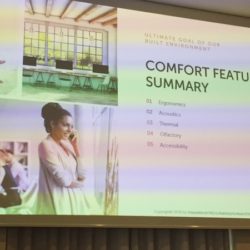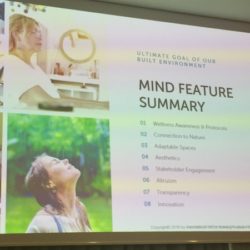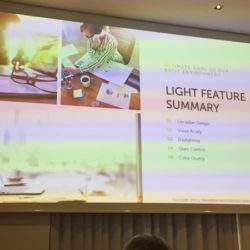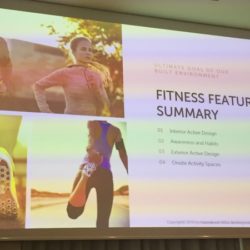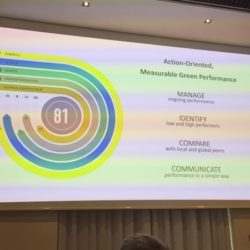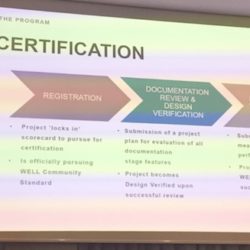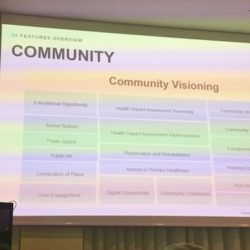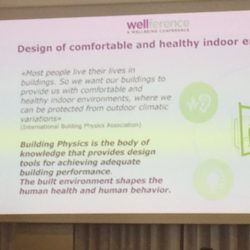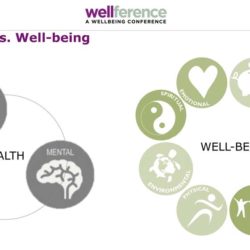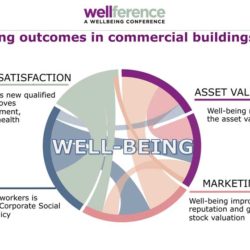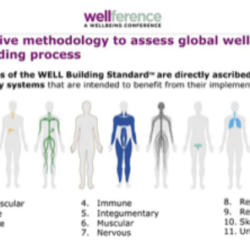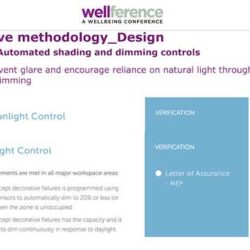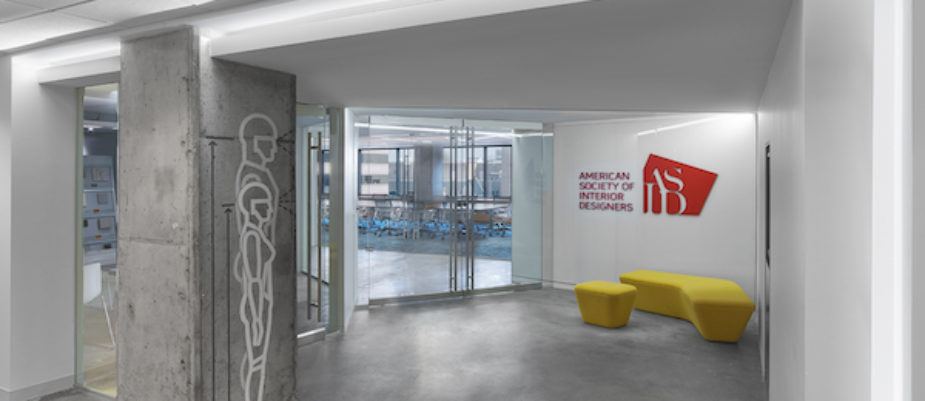
Well, the first building certification centered around people’s well-being. The focus shifts from the functionality of building to the functionality of the human body. The american guru Rick Fedrizzi was one of the authoritative speakers “the ‘second wave of sustainability is underway” he quoted.
The Well Building Standard was presented in Milan during the conference named WellFerence – first presentation in Europe organized by Apta Vitae.
The convention WellFerence aims to foster awareness of the importance of human health and wellbeing in buildings and communities. Designing, constructing and managing the sustainability of buildings and cities is a key part of ensuring a brighter future for us all while increasing architectural value.
WELL is an independently verified, performance-based system for measuring, certifying and monitoring features of buildings that impact human health and well-being. WELL is also the first building standard to focus exclusively on the human health and wellness in our buildings and communities. It combines best practices in design and construction with evidence-based medical and scientific research – harnessing buildings as vehicles to support human health and well-being.
It is a rating system that shifts the focus from the operation of the building to the way the body operates and has a major impact also on the real-estate value and annuity.Well is the first protocol based on scientific evidence certifying the quality of the built environment and its influence on the physical and mental state of the occupants, thus increasing their well-being.
It was formed 3 years ago after a six-year research work that involved multidisciplinary teams and it refers to other standard credits.
There are already 580 Well-certified projects worldwide, among them ASID (American Society of Interior Designers) Headquarters in Washington, TD Bank in Toronto, Haworth showroom in Shangai and Sceneo offices in France.
Sustainability made a major contribution to the green building growth, yet not focused enough on people so far. Now the “second wave of sustainability is underway” explained Rick Fedrizzi, chairman and CEO at IWBI (WELL Building Institute).
What it’s like living under the best conditions?
Jessica Cooper, chief commercial officer at IWBI, explained that Well is based on 7 types of assessment and certification: air, light, water, nourishment, fitness, comfort, mind.
Kay Killman, managing director at GBC Europe talked about the new way of interacting between architects and Real Estate “By now 66% of developers include well-being in the successful elements of the real-estate market, in close connection with the increase in value and annuity”.
Daniele Guglielmino Senior Sustainability Specialist, has given a broader approach to the Well Community, explaining that the seven types can and should be applied to communal areas, too.
So, Well embraces the city, but much importance is attached to interior design and furniture, which can help achieve the objectives defined by the Well system.
Building materials as well as furniture play a basic role in ensuring the occupants’ health and well-being.”
WELL is not limited to the assessment of the physical well-being, but also to the intellectual, emotional and social well-being.
The holistic methodology, as professor Marco Filippi explained, followed stresses which part of the human body is directly affected by the distinct characteristics of a WELL Building. (you can download the presentation here) .
Alfonso Senatore, founder of Ongreening , closed the conference talking about materials and technology for green buildings.
Upper photo:
The American Society of Interior Designers (ASID) headquarters office is the first space in the world to achieve both Platinum Level Certification for the WELL Building Standard (WELL) under WELL v1 and Leadership in Energy and Environmental Design (LEED), under the LEED ID+C rating system – the highest recognition awarded by the U.S. Green Building Council (USGBC) and the International WELL Building Institute (IWBI). The office space, designed by Perkins+Will, incorporates the most innovative health and wellness design features, and has sustainability as a central philosophy.

